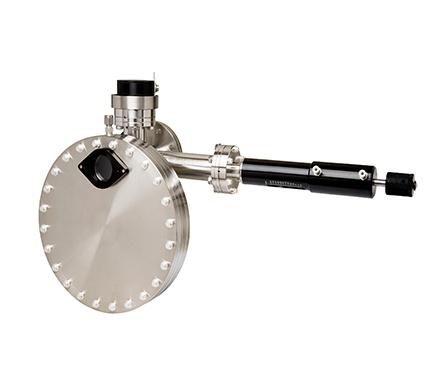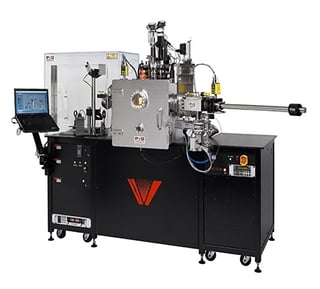 Complex coating processes, such as combinatorial sputter deposition and pulsed laser deposition (PLD), require significant attention to detail, and successful results rely on quality equipment. PVD Products is continually developing innovative solutions to overcome common technical challenges that accompany newer processes for PLD and combinatorial deposition. The following improvements are three examples of these solutions:
Complex coating processes, such as combinatorial sputter deposition and pulsed laser deposition (PLD), require significant attention to detail, and successful results rely on quality equipment. PVD Products is continually developing innovative solutions to overcome common technical challenges that accompany newer processes for PLD and combinatorial deposition. The following improvements are three examples of these solutions:
1. Intelligent Window for the PLD Process
To minimize the film buildup on the laser beam entrance port that occurs continuously during the PLD process, PVD engineers have developed an "Intelligent Window" (IW). The IW includes a rotatable, internal-fused silica disk located just in front of an anti-reflection coated laser window that makes the vacuum seal. The silica disc is in the beam path, and the ablated film coats a small section of the disc. The window can be rotated when needed to provide a fresh surface for beam transmission. With the in-situ monitor, the unit also allows the user to measure the energy that has traversed the entire beam path just before hitting the target.
This capability is ideal for setting up a process that changes fluence on the target or keeps the fluence the same. The ability to measure and adjust the energy prior to deposition, coupled with the extended high transmission of the window, assures the desired level of target laser fluence during the PLD growth process, which is a requirement for reproducible results. Intelligent Windows greatly extend the life of the laser entrance optic before the chamber needs to be opened to clean the film buildup on the window. IWs are ideal for UHV, load-locked, and reel-to-reel tape systems. These units come standard on all PVD Products' PLD tools and can easily be customized for your PLD system.
2. Angle of Incidence of Lasers On Target for the PLD Process
PVD Products uses a 60° angle of incidence (AOI) for the laser beam on a PLD target in its PLD systems. A higher AOI minimizes the backscattered flux to the laser input window because the ablation plume is highly forward in nature. The reduced backscatter keeps the window cleaner much longer. In comparison to most PLD vendors who use a 45° AOI, the amount of backscattered flux directed towards the laser entrance window will be reduced by a factor of between 40x and 100x, assuming a cosnΘ when n=10 or 14, respectively. The value of “n” varies based on many factors, but values of n between 10 and 14 are typical. The higher AOI increases the size of the laser spot, but the same amount of energy is hitting the target. Because of this, the deposition rate should be basically the same, but the lower fluence (energy/spot size) also reduces the number of particles generated per pulse.
3. Load Locks
 Load locks enhance the throughput of any tool. With a load lock, the user can exchange wafers within the chamber using a single pump-down process. The capability to remove a coated wafer and insert a virgin wafer in one load-lock pump-down cycle significantly enhances throughput. Deposition systems that include load locks typically achieve base pressures one or more orders of magnitude lower than that of a system without a load lock. This lower base pressure may provide for higher purity films when conducting reactive sputtering or evaporation. Most of PVD's vacuum chambers are load-lock compatible, and the smaller deposition systems PVD Products designs include dual-wafer load-lock systems as an optional feature.
Load locks enhance the throughput of any tool. With a load lock, the user can exchange wafers within the chamber using a single pump-down process. The capability to remove a coated wafer and insert a virgin wafer in one load-lock pump-down cycle significantly enhances throughput. Deposition systems that include load locks typically achieve base pressures one or more orders of magnitude lower than that of a system without a load lock. This lower base pressure may provide for higher purity films when conducting reactive sputtering or evaporation. Most of PVD's vacuum chambers are load-lock compatible, and the smaller deposition systems PVD Products designs include dual-wafer load-lock systems as an optional feature.
To discover more about the innovations in combinatorial deposition, download our white paper:
Combinatorial Deposition for Materials Development
These examples are just a few of the important performance details to consider when designing standard or custom deposition systems. Every organization has different requirements and performance specifications that need to be met. To learn more about how we can help you during the design of your unique deposition system, send us your specs.



Leave a Comment